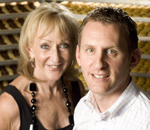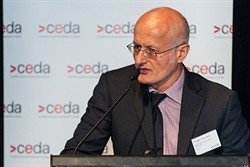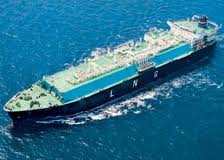Mining in Australia and Canada – it’s normalising, not crashing
DEEPER with Brad Skelton >>
FROM my perspective as a mere shipping bloke, my view of what’s happening with mining in Australia and Canada isn’t a crash as some of my younger clients think, it’s actually a ‘normalisation’.
At the risk of showing my age I have been through a downturn or cycle like this before and it’s deja vu for me.
The mother of all mining booms has played out over the last 10 years or so driven by big demand from China, which is still large, however the accompanying investment boom in mining has slowed radically to what I consider to be more normal non-boom dynamics.
Commodity prices are down and while most contracts are written in US dollars, miners in Canada and Australia are suffering from historically high exchange rates when they repatriate their profits. 
On top of that, the OH&S environment is out of control and salaries have been too.
I am not saying safety isn’t important but insane and completely non-commercial things have been going on that only serve to increase production costs and feed the voracious ‘Safety’ industry.
In Australia, sadly, we are seeing lots of people losing their jobs and salaries ‘normalising’ too.
Paying plant operators circa $140,000-plus is simply not sustainable, and anybody on these sorts of salaries surely must have considered this wouldn’t last for them?
From a shipping perspective, the amount of mining equipment moving is well down.
No wonder really with the amount of gear parked up or mothballed currently.
A client in Perth told me there are over 500 mining trucks idle right now in Western Australia.
We are seeing increased exports of equipment which could gain pace if the Australian dollar would normalise too.
But ... which market in the world could possibly consume this much gear?
The Depth Logistics Shipping Index for May and June is very telling.
May recorded a 68 percent drop from the previous 12 month high and the index just released for June recorded the lowest import value of equipment into Australia in the history of the index. Only $147 million!
To put this into perspective, some of my clients bigger trucks can cost $4 million each.
I was talking to a mate in Canada (in August). He is very nervous about the Canadian stock market as basically the Canadian index overall is doing well but the miners, who traditionally have contributed greatly to the strength of the index, are not.
He and his buddies are waiting for the correction and with a ‘seemingly’ recovering US economy they think the next move up with US interest rates will be the trigger. Perhaps Australia will be the same?
Meantime, space on ships for my clients is pretty easy to come by and freight rates are still at historically low, 1980s-type levels.
-- Brad Skelton, 2014.
BACKGROUND
Brad Skelton has come a long way indeed from his childhood in Brisbane, when he dreamed of following in his father’s footsteps of owning his own business, while playing with Tonka trucks in the backyard sandpit. Those dreams eventually led him to shipping the real thing, and other heavy cargo, all over the world through his own companies – seeing revenues top $140 million and with 200-plus employees operating in Australia, Japan, New Zealand, Hong Kong and the Netherlands. His ongoing insights and commentary on business experiences have made him known around the world asThe Shipping Bloke. Like most entrepreneurs Brad Skelton has had some setbacks, too, but these have served to provide tremendous lessons along the way and he believes he is a better businessman for those challenging experiences.
Today Brad Skelton is developing, guiding and investing in new businesses under the Depth Industries brand in accordance with the new rules of a truly globalised and constantly restructuring economy. Talking about and helping business leaders to navigate this tumultuous era of business change is his current passion. A past graduate of the prestigious Birthing of Giants programme at MIT in Boston, a current member of the Young Presidents Organisation (YPO), a Fellow of the Australian Institute of Company Directors and a director of companies other than his own, plus a former member and chapter chair of the Entrepreneurs Organisation (EO) in Brisbane, Brad Skelton provides regular astute insights for business leaders on his web log at www.theshippingbloke.com
ends

 How to resolve AdBlock issue?
How to resolve AdBlock issue? 



 GLOBALLY, economic and trade growth seemed pretty dull throughout 2013. But Australia's Export Finance and Insurance Corporation (EFIC) believes things should finally pick up in 2014.
GLOBALLY, economic and trade growth seemed pretty dull throughout 2013. But Australia's Export Finance and Insurance Corporation (EFIC) believes things should finally pick up in 2014.  According to the just-released Clarius Skills Indicator, demand for accountants, auditors and company secretaries was largely ‘balanced', rallying in the September quarter with a small surplus of 400 accountants compared with a surplus of 1,000 in the June quarter.
According to the just-released Clarius Skills Indicator, demand for accountants, auditors and company secretaries was largely ‘balanced', rallying in the September quarter with a small surplus of 400 accountants compared with a surplus of 1,000 in the June quarter.
